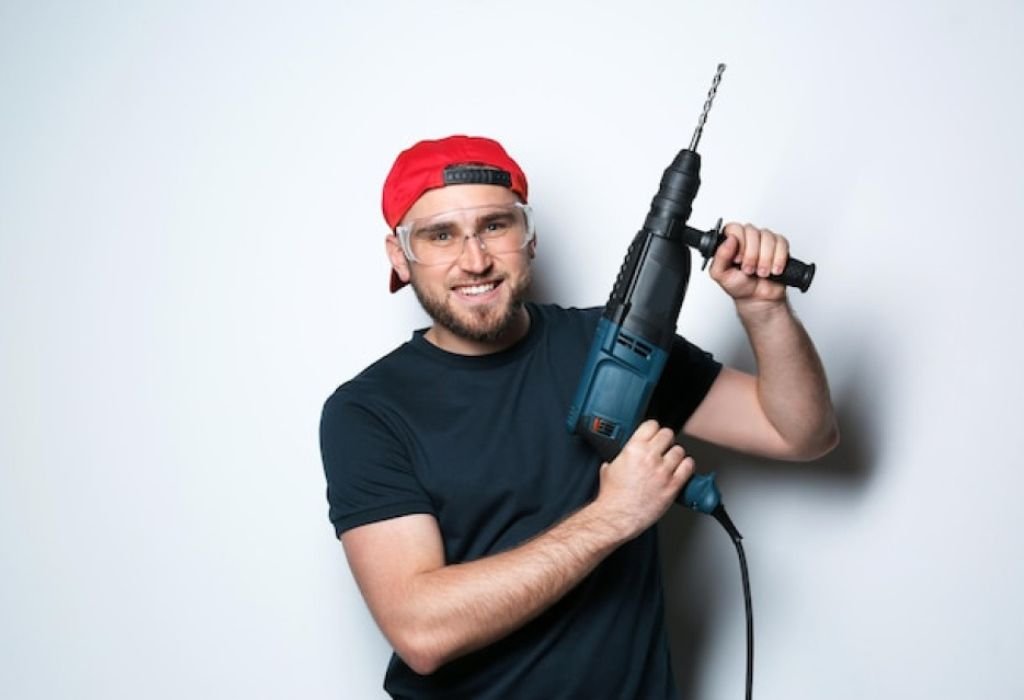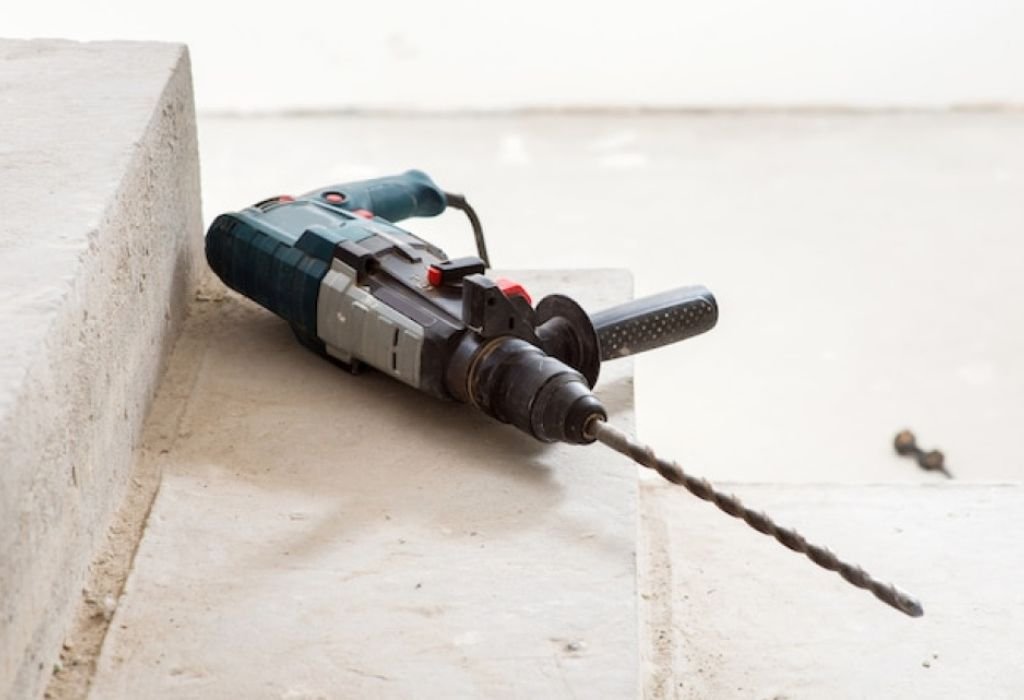A contractor leans against reinforced concrete, frustrated as a standard drill overheats and fails. The material resists every attempt, wasting time and effort.
Then, the same contractor switches to a spline rotary hammer, and the difference is immediate. The bit locks in securely, transferring force directly into the concrete.
The power comes from the unique spline chuck system. Unlike SDS or standard drills, spline hammers grip bits with grooved shanks that maximize torque transfer.
Reports project the global power tools industry to surpass $40 billion by 2030, with rotary hammers continuing to drive demand (Allied Market Research).
Spline tools remain trusted in heavy-duty applications even as SDS dominates the mainstream.
This guide explores everything about spline rotary hammers—how they work, their unique design, advantages, comparisons with SDS, and why they still matter.
Quick Answer — What Is a Spline Rotary Hammer?

A spline rotary hammer is a powerful drilling and chiseling tool that uses a grooved spline shank system to lock bits securely in place. This ensures maximum torque transfer and prevents slippage during heavy-duty work.
Unlike SDS hammers, spline tools are bulkier, less common, but built for extreme durability. They were the standard in construction before SDS-Plus and SDS-Max gained dominance.
Is a spline rotary hammer the same as an SDS hammer?
No. Spline uses grooved shanks, while SDS uses slotted shanks.
Why was spline popular in the past?
It provided unmatched torque and durability for large-scale jobs.
Can SDS bits fit into spline tools?
No. Each system requires its own compatible bits.
Is spline still available today?
Yes, but mainly for industrial and large-scale construction work.
Which system is stronger?
Spline delivers excellent torque, but SDS is more versatile and widely supported.
Anatomy of a Spline Rotary Hammer
The defining feature of a spline rotary hammer is its chuck system. Instead of slots like SDS bits, spline bits have 12 grooves cut into the shank.
These grooves interlock with matching teeth in the chuck. The result is a secure connection that can handle extreme torque without bit slippage.
The design is especially effective for drilling large-diameter holes. Heavy impacts are distributed evenly across the shank, reducing wear and breakage.
Most spline hammers are heavier and larger than SDS models. They are built for industrial durability, not compact convenience.
What makes spline unique?
The multi-groove shank provides superior grip under torque.
Are spline hammers heavier than SDS?
Yes, they are bulkier and designed for heavy-duty use.
Can adapters allow SDS bits in spline hammers?
Yes, but they reduce efficiency and performance.
Why are spline bits more expensive?
They are larger and manufactured for industrial jobs.
Does spline prevent slippage?
Yes, its locking design holds bits firmly even under stress.
Applications of Spline Rotary Hammers
Spline rotary hammers are typically used on construction sites where materials are toughest. They shine in reinforced concrete and large masonry jobs.
Contractors use them for drilling anchor holes in thick walls, chiseling floors, and demolishing structural concrete. Their torque and durability make them a reliable choice.
Infrastructure projects like bridges, tunnels, and high-rise construction also rely on spline hammers. They handle long work hours without overheating or breaking down.
While less common in DIY, they remain popular among professionals needing maximum torque.
Who uses spline rotary hammers?
Contractors, masons, and heavy-duty builders.
Can homeowners use them?
Only if tackling very large projects involving concrete or masonry.
Are spline hammers common today?
Less common, with SDS dominating most markets.
Do spline hammers support chiseling?
Yes, with compatible chisel attachments.
Do they last long?
Yes, they are highly durable with proper maintenance.
Spline vs. SDS Rotary Hammers
The biggest competitor to spline is the SDS system. SDS-Plus and SDS-Max are now the most widely used rotary hammer types.
Spline excels in torque and durability. Its locking design provides unmatched stability for heavy drilling and chiseling.
However, SDS tools offer more convenience, easier bit changes, and greater availability of accessories. This has made them the global standard.
Today, SDS-Max has replaced spline in most applications, but spline tools still serve niche heavy-duty roles.
Which is stronger, SDS-Max or spline?
Both are powerful, but SDS-Max dominates modern markets.
Are spline bits harder to find?
Yes, they are less common than SDS bits.
Why did SDS replace spline?
It offers quicker bit changes and broader compatibility.
Do manufacturers still make spline tools?
Yes, but only a few brands continue production.
Which system is future-proof?
SDS-Plus and SDS-Max are the future of rotary hammers.
Safety and Maintenance Tips

Safety is critical when handling heavy spline rotary hammers. Their size and torque require extra caution.
Operators must wear PPE including gloves, goggles, hearing protection, and respirators for dust.
Routine maintenance extends tool life. Greasing the chuck, cleaning vents, and checking brushes are essential steps.
Storage in dry, dust-free environments helps preserve both tool and bits.
Do spline hammers create more vibration?
Yes, they produce strong vibrations due to weight and power.
Should spline bits be greased?
Yes, lubrication reduces wear and heat.
Is kickback a concern?
Yes, high torque makes secure handling vital.
Do they need special cases?
Yes, for safe transport and storage.
How often should they be serviced?
Every 6–12 months depending on usage intensity.
Future of Spline Rotary Hammers
The construction industry is shifting heavily toward SDS tools. Their versatility and global availability make them the preferred choice.
Still, spline rotary hammers remain valued in niche applications. Some professionals trust them for specific heavy-duty tasks where torque is critical.
Manufacturers continue to produce spline tools, but on a smaller scale. Adapters and replacement bits are also still available for legacy users.
While SDS may dominate, spline remains respected for its raw power and reliability.
Will spline rotary hammers disappear?
Likely in consumer markets, but industrial use may continue.
Should new buyers invest in spline?
Only if their projects demand extreme torque.
Do SDS tools outperform spline?
Yes, in convenience and widespread compatibility.
Are spline bits still produced?
Yes, but by fewer manufacturers.
Is spline still reliable today?
Yes, it remains a durable choice for specialized jobs.
Conclusion
So, what is a spline rotary hammer? It is a heavy-duty tool designed with a grooved shank system for maximum torque transfer and bit stability.
Once the industry standard, spline has largely been replaced by SDS systems. However, it still holds a place in industrial construction where raw torque is needed.
Professionals continue to use spline hammers for reinforced concrete, demolition, and long-duration tasks. With proper maintenance, they deliver years of service.
Final advice: For most users, SDS is the practical choice. But for heavy-duty specialists, spline rotary hammers remain a trusted and powerful ally.

I’m John F. Nicholas, the founder, lead writer, and drill enthusiast behind 101drill.com. With years of hands-on experience in power tools and DIY projects, I created this platform to share practical knowledge, expert tips, and real-world insights to help others master the art of drilling.
